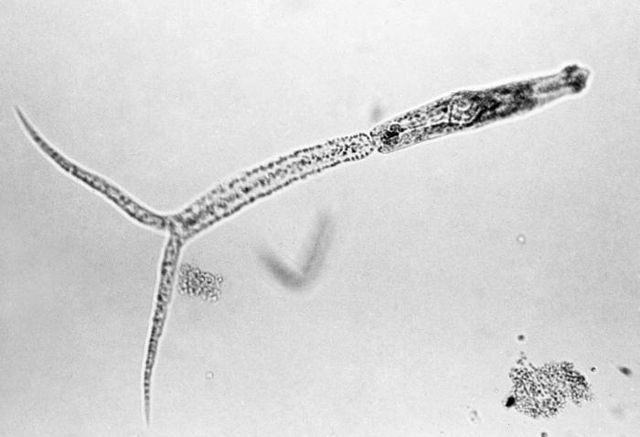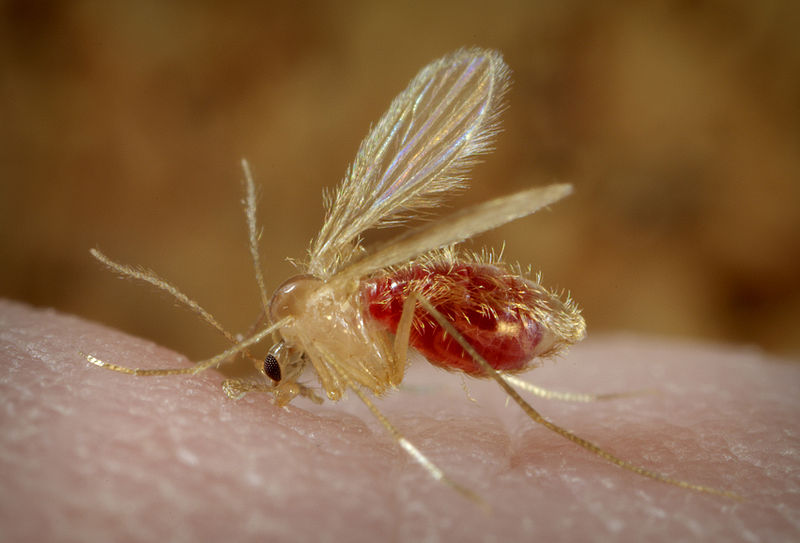

Rohr Laboratory of Ecology and Public Health
| Vector-borne disease and climate |
||
Phlebotomus papatasi sandfly responsible for the spread of the vector-borne parasitic disease leishmaniasis (photo credit: Bruce Wetzel)
|
Research and Publications |
|
Global climate change (GCC) is likely to adjust the distribution and severity of vector-borne diseases. Recent work by my collaborators on falciparum malaria, however, showed that the influence of temperature on transmission is nonlinear and that most current models that ignore these nonlinearities produce inaccurate predictions of field transmission data. With funds from a recently funded NSF Ecology and Evolution of Infectious Disease grant (PI: Erin Mordecai, Co-PIs: Leah Johnson, Matthew Thomas, Sadie Ryan, Anna Stewart, Van Savage), we hope to develop a general framework for predicting the temperature sensitivity of vector-borne diseases. To fulfill this goal, we have begun developing and empirically parameterizing temperature-sensitive transmission models based on data from the literature for 13 vector-borne diseases: vivax malaria, trypanosomiasis, dengue, chikungunya, yellow fever, West Nile, Eastern equine encephalitis, Western equine encephalitis, St. Louis encephalitis, Rift Valley fever, Ockelbo (Sindbis) disease, Ross River fever, and bluetongue. Additionally, this team I will conduct laboratory experiments to measure local thermal adaptations of the mosquito vectors, Aedes aegypti and Ae. albopictus, from across their geographic and temperature ranges. We are collecting local-scale data on entomological transmission risk, dengue cases, climate, and other covarying factors from Ecuador. To complement these local-scale data, we are developing a large geo-referenced database on field transmission from the literature, along with climatic and socioeconomic covariates. These field data will serve to test the accuracy of our transmission models and assess the relative importance of temperature for transmission at scales from neighborhoods to continents. An exciting component to our vector work is that we are testing theoretical predictions for vector and parasite thermal responses based on the metabolic theory of ecology (MTE), which posits that the metabolic rate of organisms is the fundamental biological rate that governs pattern and process from cells to the biosphere. My laboratory recently proposed and tested the climate variability hypothesis for disease emergence, which postulates that increased variability in temperature associated with climate change should increase pathogen abundance because all pathogens are smaller and have faster metabolisms than their hosts allowing them to acclimate to climatic shifts more quickly. This, in turn, should provide windows where pathogens can readily proliferate and transmit. If MTE can predict host-pathogen and vector dynamics, the exciting upshot is that body size and temperature information alone might be capable of predicting the outcomes of these interactions!Sample Publications Rohr, J.R., Dobson, A.P., Johnson, P.T.J., Kilpatrick, A.M., Paull, S.H., Raffel, T.R., Ruiz-Moreno, D., Thomas, M.B. 2011. Frontiers in climate change-disease research. Trends in Ecology and Evolution 26: 270-277 Raffel, T.R., Romansic, J.M., Halstead, N.T., McMahon, T.A., Venesky, M.D., Rohr, J.R. 2013. Disease and thermal acclimation in a more variable and unpredictable climate. Nature Climate Change 3: 146-151 (featured in News and Views, article by Ross Alford: http://www.nature.com/nclimate/journal/v3/n2/full/nclimate1812.html; Altmetric score of 36, 97th percentile) Rohr, J.R., Raffel, T.R., Blaustein, A.R., Johnson, P.T.J., Paull, S.H., Young, S. 2013. Using physiology to understand climate-driven changes in disease and their implications for conservation. Conservation Physiology 1:cot022-cot022 For a full list of publications, please see the Publications page on this website. |
||
